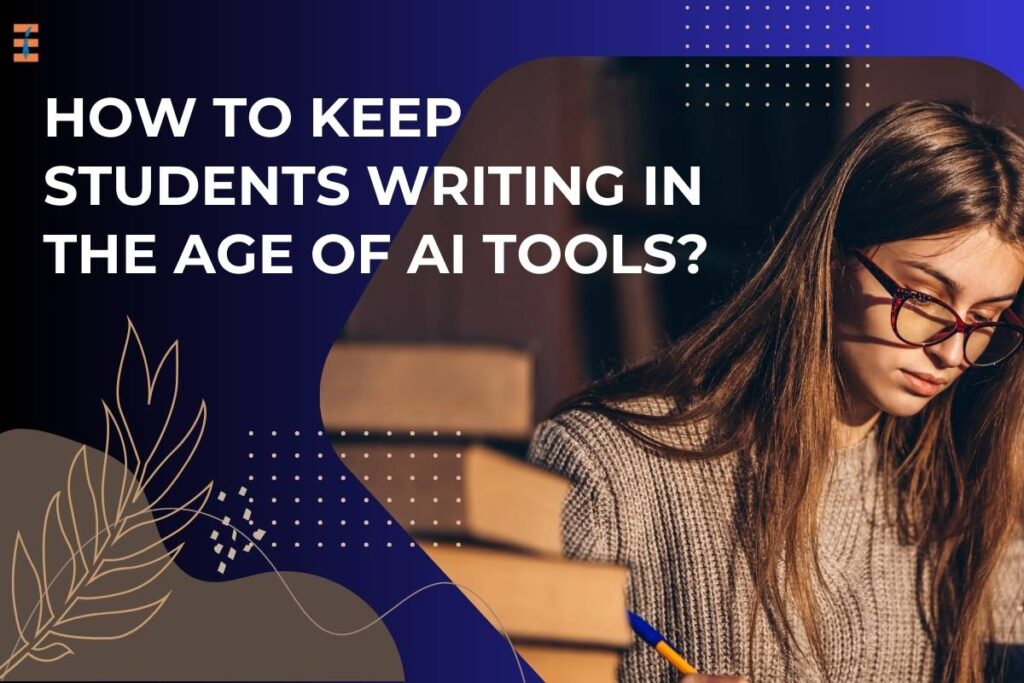In this era, education is undergoing a transformative shift, with technology playing an increasingly prominent role in the classroom. The “Age of AI” has ushered in a multitude of innovative tools that offer remarkable benefits to both educators and students. One of the most notable advancements is the integration of AI (Artificial Intelligence) into education, particularly in writing. While AI tools can be invaluable for enhancing students’ writing skills, there is an ongoing debate about how they impact students’ creativity and the development of students writing abilities. In this article, we will explore the advantages and challenges of using AI tools in education and how to balance embracing this technology and fostering students’ writing skills.
The Age of AI in Education
Artificial Intelligence has revolutionized the way we teach and learn. Its applications are diverse and extend to various educational fields, including personalized learning, data analysis, and student engagement. In the realm of students’ writing, AI tools are used for everything from grammar and spell checks to providing suggestions for improving writing quality.
Here are some of the key AI tools transforming the students’ writing:
1. Automated Essay Scoring

AI can evaluate and score essays, providing immediate feedback to students. This is particularly valuable for educators who need to assess a large volume of assignments quickly.
2. Grammar and Spell Checkers
AI-driven tools, such as Grammarly, help students identify and correct errors in their writing, improving students’ writing quality.
3. Text Generation
AI-powered text generators can assist students in brainstorming ideas or creating content quickly, although their use raises questions about originality and creativity.
4. Plagiarism Detection
AI is utilized to identify instances of plagiarism, ensuring that students’ work is original and not copied from other sources
Related: Tips For Writing An Essay As An Excellent Student
While these tools have clear advantages, they also bring forth challenges related to students’ development as writers and critical thinkers. Striking a balance is crucial to ensure that AI complements traditional teaching methods without overshadowing the core aspects of writing.
Advantages of AI Tools in Writing
1. Efficiency
AI tools can save educators and students significant time. Automated essay scoring, for example, accelerates the grading process, allowing teachers to provide prompt feedback.
2. Personalized Learning

AI-driven writing tools can adapt to individual students’ needs, offering tailored recommendations and exercises to enhance students’ writing skills.
3. Improved Grammar and Mechanics
AI grammar and spell checkers assist students in correcting errors and refining students’ writing, leading to better-quality compositions.
4. Access to Information
AI text generators can help students access a wide range of information and ideas, aiding them in the research and brainstorming process.
5. Plagiarism Prevention
AI-powered plagiarism detection tools discourage academic dishonesty by identifying copied content.
Challenges of Overreliance on AI Tools
1. Creativity
An overreliance on AI-generated content may inhibit students’ creativity and the development of their unique writing voices.
2. Critical Thinking
Relying on AI for generating ideas or solutions may diminish students’ critical thinking abilities, as they may opt for the easiest solutions rather than engaging in deeper analysis.
3. Originality
There is a risk that students may use AI-generated content without proper citation, leading to issues of plagiarism.
4. Homogenization of Writing
AI tools might encourage a homogenized style of students’ writing if they predominantly follow AI-generated suggestions.
Striking the Right Balance
The key to harnessing the benefits of AI tools while nurturing students’ writing skills lies in striking a harmonious balance. Here are some strategies to achieve this equilibrium:
1. Integrate AI as a Writing Aid

Position AI tools as aids rather than replacements for writing. Encourage students to use them for specific tasks like grammar and spelling checks or generating ideas.
2. Emphasize Creativity and Critical Thinking
Maintain a strong emphasis on creativity and critical thinking in writing assignments. Encourage students to express their unique voices and engage deeply with the subject matter.
3. Promote Ethical Use
Educate students about the ethical use of AI-generated content and the importance of proper citation to avoid plagiarism.
4. Set Limits
Define clear boundaries for the use of AI tools. Specify when and how students can use AI assistance to ensure they don’t overly rely on these tools.
5. Foster Writing Workshops
Create an environment for writing workshops, where students can share and critique each other’s work. This collaborative approach encourages peer learning and diverse writing styles.
6. Educate on AI’s Limitations
Make students aware of the limitations of AI tools. AI, while powerful, is not a replacement for the creativity and depth that human writers can bring to their work.
7. Continuous Evaluation
Continuously assess the impact of AI tools on students’ writing skills. Adjust the use of AI as needed to strike the right balance.
Conclusion
The Age of AI has transformed education, providing numerous benefits to both educators and students, especially in the realm of writing. AI tools offer efficiency, personalization, and improved grammar and mechanics. However, challenges related to creativity, critical thinking, originality, and homogenization of writing styles also accompany the adoption of these tools.
The key to successfully navigating the Age of AI in education is to maintain a balance. AI should be embraced as a valuable aid in the writing process, but it should not overshadow the development of students’ unique voices and critical thinking skills. Educators play a pivotal role in guiding students to strike this equilibrium, ensuring that AI complements, rather than hinders, their growth as proficient writers. By carefully integrating AI tools and upholding the importance of creativity and originality, educators can prepare students for a future where AI and human intelligence coexist harmoniously in the world of writing.

